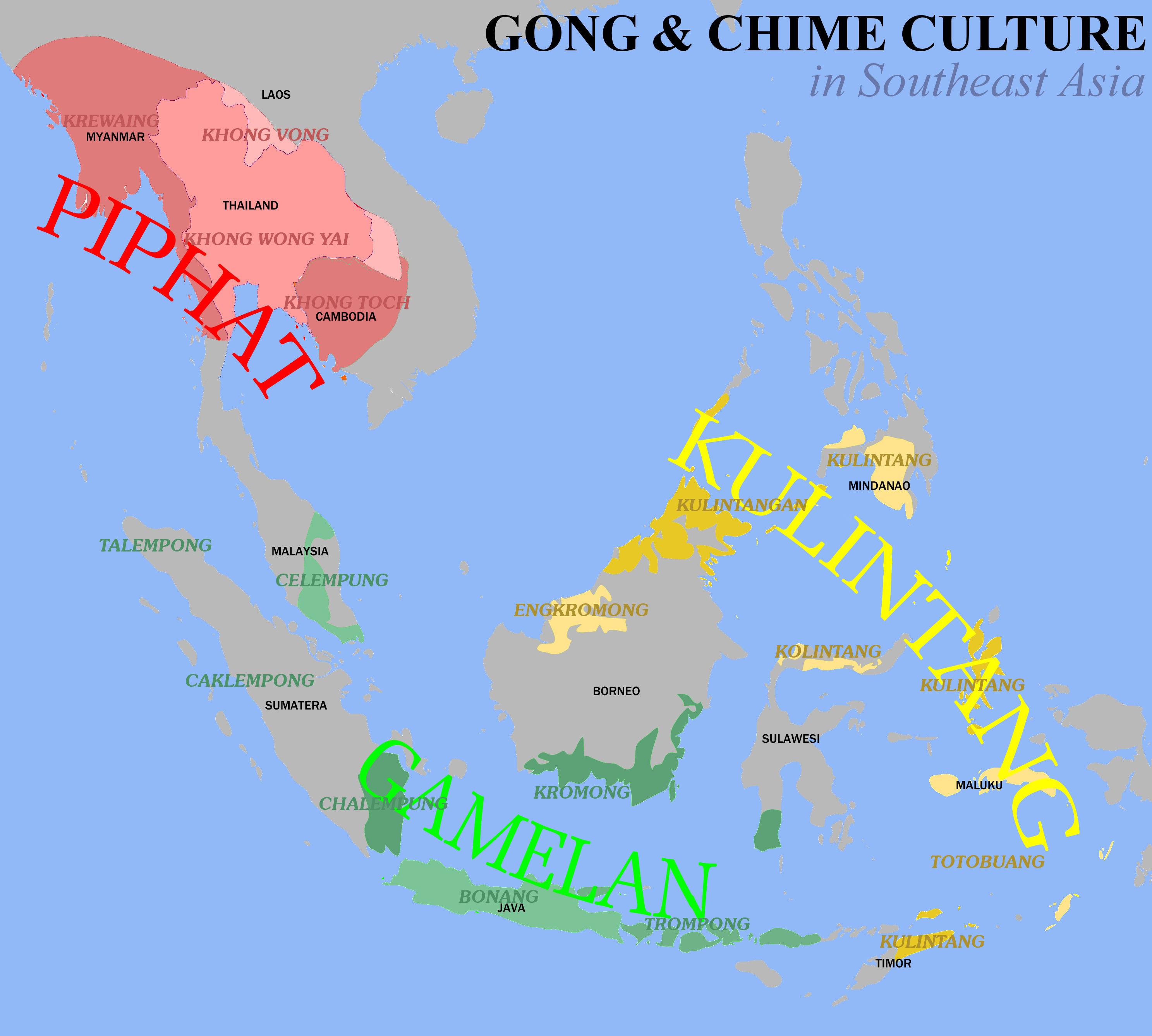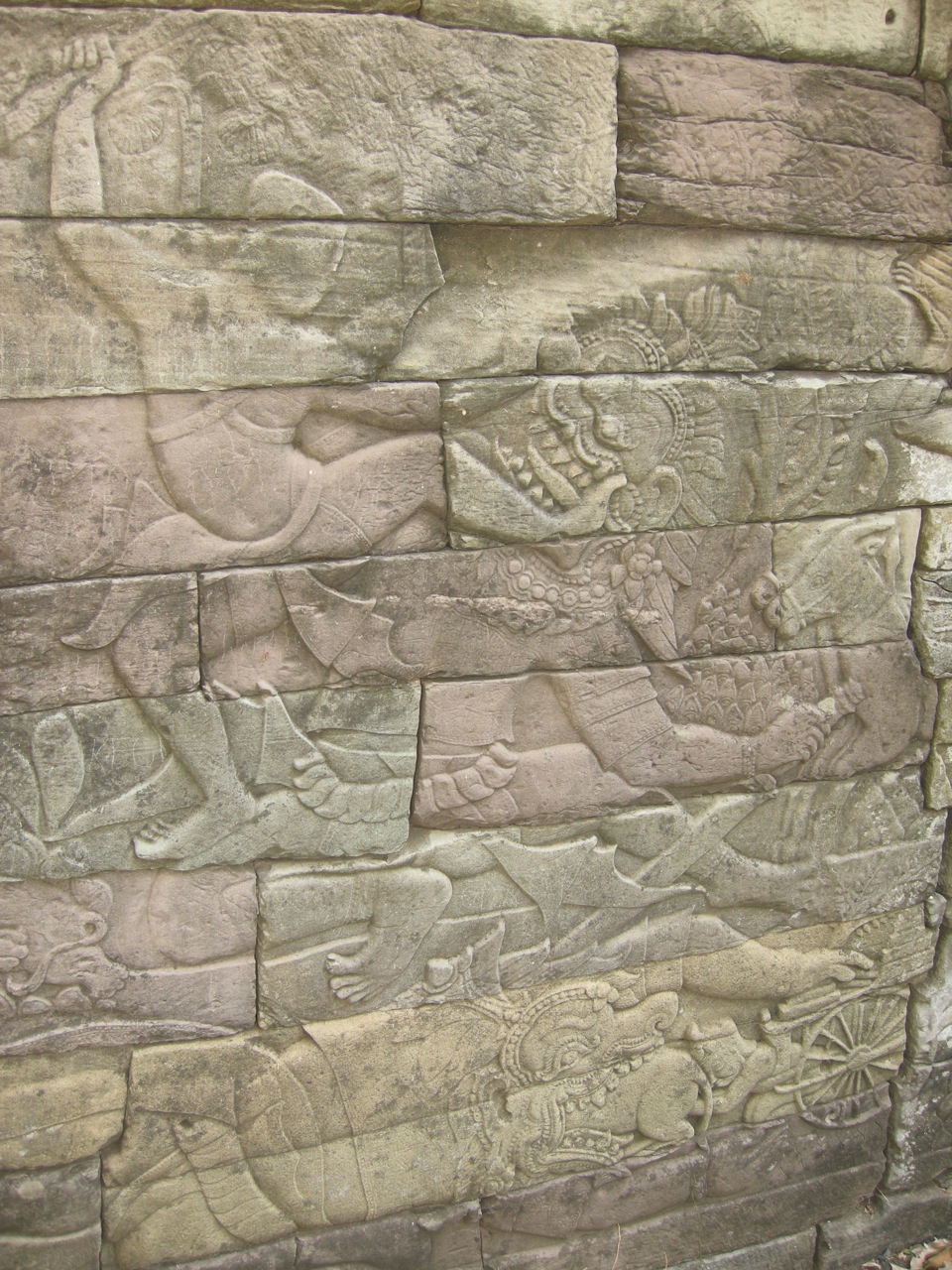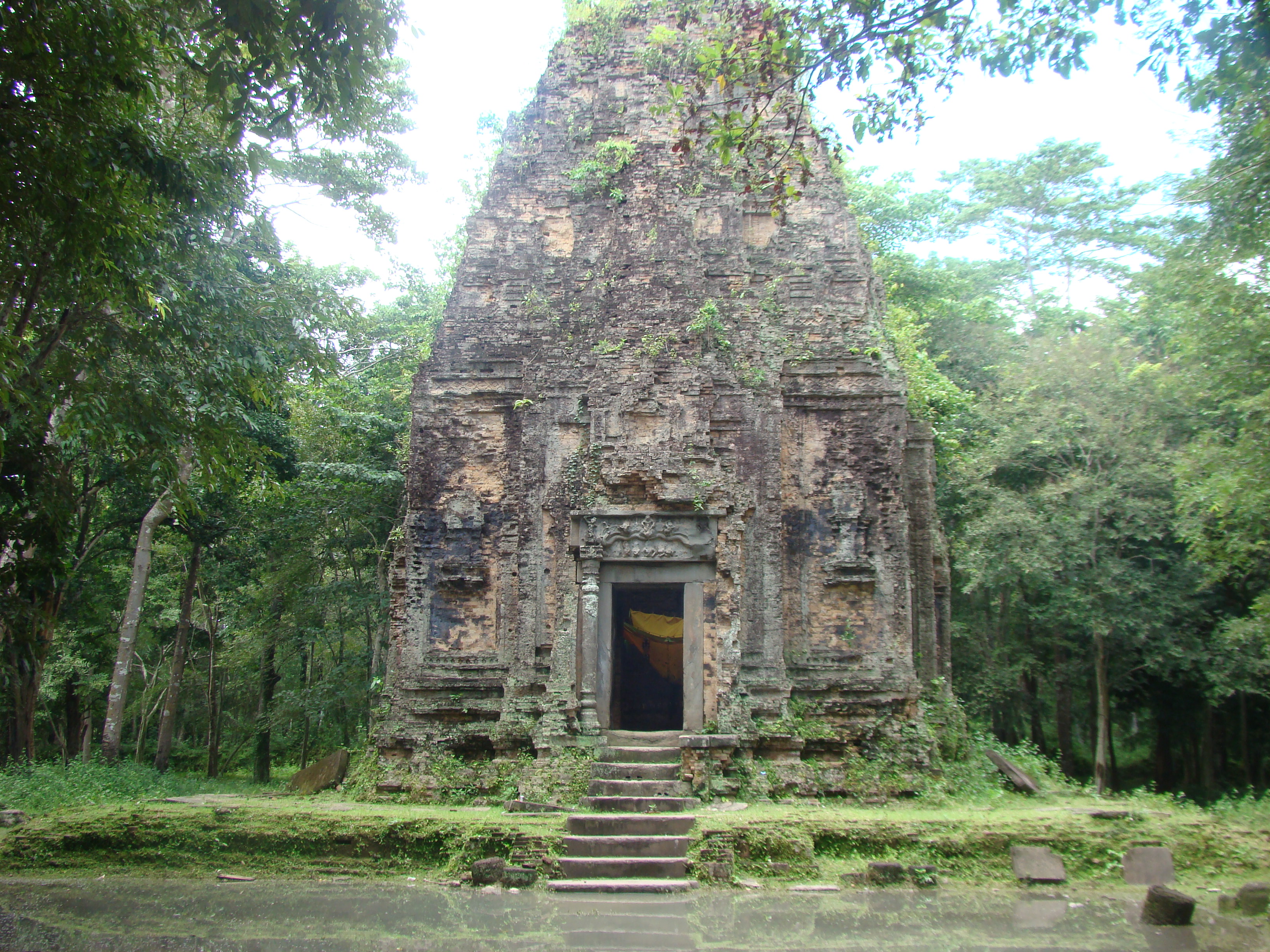|
Pinpeat
The ''Pinpeat'' (, ) is the largest Khmer traditional musical ensemble. It has performed the ceremonial music of the royal courts and temples of Cambodia since ancient times. The orchestra consists of approximately nine or ten instruments, mainly wind and percussion (including several varieties of xylophone and drums). It accompanies court dances, masked plays, shadow plays, and religious ceremonies. This ensemble is originated in Cambodia since before Angkorian era. The pinpeat is analogous to the pinphat adopted from the Khmer court by the Lao people and the piphat ensemble of Thailand.Sam-Ang Sam "Cambodia" in ''New Grove Dictionary of Music and Musicians'', 2nd ed., 2001. pp. 861-863 Etymology According to Chuon Nath's Khmer dictionary, the 'Pinpeat' is composed of the Sanskrit terms ''vina/ pin'' () referring to the pin (harp), which was formerly used as the premiere instrument in this ensemble, and ''vadya/ padya/ peat'' () referring to an ensemble of instrument ... [...More Info...] [...Related Items...] OR: [Wikipedia] [Google] [Baidu] |
Pinphat
Pinphat is a traditional Lao ensemble used to accompanied in Laotian shadow theater and masked theater Phralak Phralam, the Laotian version of Indian Ramaya. This ensemble was adopted from the Khmer orchestra. Pinphat is analogous to Khmer Pinpeat and Thai Piphat. Etymology As Pinphat was adopted from the Khmer traditional ensemble called Pinpeat, the pronunciation is very similar to its Cambodian cousin and sharing the same words root from Sanskrit ''vînâ'' and ''vadya'' meaning 'musical instrument'. See also * Khene The ''khaen'' (; spelled "Khaen", "Kaen", "Kehn" or "Ken" in English; , ; , , ; , ; – ''Ken''; Vietnamese language, Vietnamese: ''khèn'' or ''kheng'') is a Lao mouth organ whose pipes, which are usually made of bamboo, are connected with a s ... References Music of Laos Classical and art music traditions {{Laos-stub ... [...More Info...] [...Related Items...] OR: [Wikipedia] [Google] [Baidu] |
Pin (harp)
The pin (, ) is a Cambodian arched harp, one of the most historically important instruments in Cambodian music. The instrument went extinct 16th century, and is now being restored in modern times. Its historical importance is emphasized by the very name for Cambodian classical music, '' pinpeat'' (Khmer: ពិណពាទ្យ). After the pin was no longer being used, Cambodians continued to use the instrument's name for classical music into the present era. When the pin was no longer being used, the tonal range of other instruments was expanded, possibly to compensate. Burmese '' saung gauk'' and '' roneats'' had more keys for the chromatic scale and the number of gongs in the '' kong von thom'' and '' kong toch'' "more than doubled in number since the musician depicted on the Angkorian carvings." Etymology The word ''pin'' (ពិណ) derived from the Sanskrit word '' veena/ vina'' (वीणा). This musical instrument gave the name to Cambodian traditional musical ense ... [...More Info...] [...Related Items...] OR: [Wikipedia] [Google] [Baidu] |
Kong Von Toch
The ''kong vong toch'' ( or kong touch ) is a number of gongs that are attached to a circle-shaped rack, closely resembling its larger relative, the kong thom. Both instruments belong to the percussion family of traditional Khmer instruments, along with the roneat ek, roneat dek, and roneat thung. These instruments are all performed in the pinpeat and mahaori orchestras. The kong toch is made of three parts; the frame of the gong circle, the gongs themselves, and the gong mallets. The ''kong toch'' is analogous to the ''khong wong lek'' used in Thai. History The Khmer word ''korng/ kong'' "gong" is refers to all types of gong including the flat or bossed gong, single or in a set, suspended on cords from hooks, or a gong placed over a frame. The history of these gongs can be traced in part from the epigraphy and iconography of Funan-Chenla and Angkor periods, for many can be seen carved on ancient Khmer temple. Construction and Design Gong Frame The frame of the gong circle is ... [...More Info...] [...Related Items...] OR: [Wikipedia] [Google] [Baidu] |
Pin (harp)
The pin (, ) is a Cambodian arched harp, one of the most historically important instruments in Cambodian music. The instrument went extinct 16th century, and is now being restored in modern times. Its historical importance is emphasized by the very name for Cambodian classical music, '' pinpeat'' (Khmer: ពិណពាទ្យ). After the pin was no longer being used, Cambodians continued to use the instrument's name for classical music into the present era. When the pin was no longer being used, the tonal range of other instruments was expanded, possibly to compensate. Burmese '' saung gauk'' and '' roneats'' had more keys for the chromatic scale and the number of gongs in the '' kong von thom'' and '' kong toch'' "more than doubled in number since the musician depicted on the Angkorian carvings." Etymology The word ''pin'' (ពិណ) derived from the Sanskrit word '' veena/ vina'' (वीणा). This musical instrument gave the name to Cambodian traditional musical ense ... [...More Info...] [...Related Items...] OR: [Wikipedia] [Google] [Baidu] |
Piphat
A ''piphat'' () is a kind of ensemble in the classical music of Thailand, which features wind and percussion instruments. It is considered the primary form of ensemble for the interpretation of the most sacred and "high-class" compositions of the Thai classical repertoire, including the Buddhist invocation entitled ''sathukan'' () as well as the suites called ''phleng rueang''. It is also used to accompany traditional Thai theatrical and dance forms including '' khon'' () (masked dance-drama), '' lakhon'' (classical dance), and shadow puppet theater. Piphat in the earlier time was called ''phinphat''. It is analogous to its Cambodian musical ensemble of pinpeat and Laotian ensemble of pinphat. Types of ''piphat'' The smallest ''piphat'', called ''piphat khrueang ha'', is composed of six instruments: '' pi nai'' (oboe); ''ranat ek'' (xylophone); '' khong wong yai'' (gong circle); '' taphon'' or other Thai drums; '' glong thad'', a set of two large barrel drums beaten with s ... [...More Info...] [...Related Items...] OR: [Wikipedia] [Google] [Baidu] |
Royal Ballet Of Cambodia
The Royal Ballet of Cambodia (, ''Robam Preah Reach Troap'', ) is a classical Khmer dance known for its intricate hand movements and elaborate costumes. Historically linked to the Khmer court, it has been performed at various royal ceremonies such as coronations, weddings, funerals, and Khmer holidays. The repertoire includes various ancient Khmer legends. The ballet faced near extinction during the Khmer Rouge regime in the 1970s but continues to be a significant cultural heritage of Cambodia, reflecting traditional values of refinement, respect, and spirituality of the Khmer people. It has been inscribed on the UNESCO Intangible Cultural Heritage Lists since 2003. Etymology Western names for this dance tradition, such as Cambodian court dance, often make reference to the royal court, as the tradition was performed and maintained by attendants of the royal palaces. As a performing art, it is formally referred to as the Royal Ballet of Cambodia (''le Ballet royal du Cambo ... [...More Info...] [...Related Items...] OR: [Wikipedia] [Google] [Baidu] |
Angkor
Angkor ( , 'capital city'), also known as Yasodharapura (; ),Headly, Robert K.; Chhor, Kylin; Lim, Lam Kheng; Kheang, Lim Hak; Chun, Chen. 1977. ''Cambodian-English Dictionary''. Bureau of Special Research in Modern Languages. The Catholic University of America Press. Washington, D.C. Chuon Nath Khmer Dictionary (1966, Buddhist Institute, Phnom Penh). was the capital city of the Khmer Empire, located in present-day Cambodia. The city and empire flourished from approximately the 9th to the 15th centuries. The city houses the Angkor Wat, one of Cambodia's most popular tourist attractions. The name ''Angkor'' is derived from ''nokor'' (), a Khmer language, Khmer word meaning "kingdom" which in turn derived from Sanskrit ''nagara'' (), meaning "city". The Angkorian period began in AD 802, when the Khmer people, Khmer Hinduism, Hindu monarch Jayavarman II declared himself a "universal monarch" and "Devaraja, god-king", and lasted until the late 14th century, first falling under Ayut ... [...More Info...] [...Related Items...] OR: [Wikipedia] [Google] [Baidu] |
Bayon
The Bayon (, ) ( ''BAI-on'') is a richly decorated Khmer temple related to Buddhism at Angkor in Cambodia. Built in the late 12th or early 13th century as the state temple of the King Jayavarman VII (), the Bayon stands at the centre of Jayavarman's capital, Angkor Thom ().Higham, C., 2001, The Civilization of Angkor, London: Weidenfeld & Nicolson, , p.121Higham, C., 2014, Early Mainland Southeast Asia, Bangkok: River Books Co., Ltd., pp.378-382 The Bayon's most distinctive feature is the multitude of serene and smiling stone faces of Brahma - probably modeled on the face of King Jayavarman VII - on every side the many towers that jut out from the upper terrace and cluster around its central peak.Freeman and Jacques, p.78. The main conservatory body, the Japanese Government Team for the Safeguarding of Angkor (the JSA) has described the temple as "the most striking expression of the baroque style" of Khmer architecture, as contrasted with the classical style of Angkor Wat ... [...More Info...] [...Related Items...] OR: [Wikipedia] [Google] [Baidu] |
Khloy
The ''khloy'' (, Burmese: ပုလွေ, ) is a traditional bamboo vertical duct flute from Cambodia and more specifically the Khmer people. The ''khloy'' and other similar bamboo flutes can be found throughout Asia, due to bamboo's abundance in the region. The khloy is a duct flute and has two sizes: smaller, higher-pitched (''khloy ek'') and larger, lower-pitched (''khloy thomm''). It has six finger holes and a thumb hole, or seven finger holes and no thumb hole. A hole above the highest finger hole may be covered with a membrane made of rice paper or bamboo inner skin, similar to '' di mo''. The Cambodian khloy is often mistaken for its close relative of Thailand, the klui flute, however Khmer ''khloy'' is aged older. Unlike the klui flute, the khloy is generally played solo in an informal setting. The khloy is mostly played using the pentatonic scale. Etymology ''Khloy'' or ''khluy'' is a Khmer word for flute. The word ''kluy'' appears on a pedestal at Kuk Prasat tem ... [...More Info...] [...Related Items...] OR: [Wikipedia] [Google] [Baidu] |
Banteay Chhmar
Banteay Chhmar ( , ) is a commune (khum) in Thma Puok District in Banteay Meanchey Province, Banteay Meanchey province in far northwest Cambodia. It is located 63 km north of provincial capital Serei Saophoan (city), Sisophon and about 20 km east of the Thai border. The commune of Banteay Chhmar contains 14 villages. The massive temple of Banteay Chhmar, along with its satellite shrines and reservoir (''baray''), comprises one of the most important and least understood archaeological complexes from Cambodia's Angkor period. History Like Angkor Thom, the temple of Banteay Chhmar was constructed during the reign of Jayavarman VII in the late 12th or early 13th century. One of the temple's shrines once held an image of Srindrakumararajaputra (the crown prince), a son of Jayavarman VII who died before him.Higham, C., 2001, The Civilization of Angkor, London: Weidenfeld & Nicolson, The temple doors record Yasovarman I's failed invasion of Champa.Maspero, G., 2002, The Cham ... [...More Info...] [...Related Items...] OR: [Wikipedia] [Google] [Baidu] |
Chenla
Chenla or Zhenla ( zh, t=真臘, s=, 真腊, p=Zhēnlà, w=Chen-la; , ; ) is the Chinese designation for the vassal of the kingdom of Funan preceding the Khmer Empire that existed from around the late 6th to the early 9th century in Indochina. The name was still used in the 13th century by the Chinese envoy Zhou Daguan, author of ''The Customs of Cambodia''. It appears on the Mao Kun map. However, modern historiography applies the name exclusively to the period from the late 6th to the early 9th century. This period of Cambodian history is known by historians as the Pre-Angkor period. It is doubted whether Chenla ever existed as a unitary kingdom, or if this is a misconception by Chinese chroniclers. Most modern historians assert that "Chenla" was in fact just a series of loose and temporary confederations of principalities in the pre-Angkor period. Etymology "Chenla" or "Zhenla" was the name given in Chinese accounts of an entity that sent tributes to Chinese emperors. The w ... [...More Info...] [...Related Items...] OR: [Wikipedia] [Google] [Baidu] |
Sambor Prey Kuk
Sambor Prei Kuk (Isanapura) (, ) is an archaeological site in Cambodia located in Kampong Thom Province, north of Kampong Thom, the provincial capital, east of Angkor and north of Phnom Penh. The now ruined complex dates back to the Pre-Angkorian Chenla Kingdom (late 6th to 9th century), established by king Isanavarman I as central royal sanctuary and capital, known then as "Isanapura" (, ).Higham, C., 2014, ''Early Mainland Southeast Asia'', Bangkok: River Books Co., Ltd., In 2017, Sambor Prei Kuk was declared a UNESCO World Heritage Site. Located on the Eastern bank of the Tonle Sap lake, close to the Steung Saen River, the central part of Sambor Prei Kuk is divided into three main groups. Each group has a square layout surrounded by a brick wall. The structures of the overall archaeological area were constructed at variable times: the southern and north groups (7th century) by Isanavarman I, who is considered a possible founder of the city and the central group (la ... [...More Info...] [...Related Items...] OR: [Wikipedia] [Google] [Baidu] |









